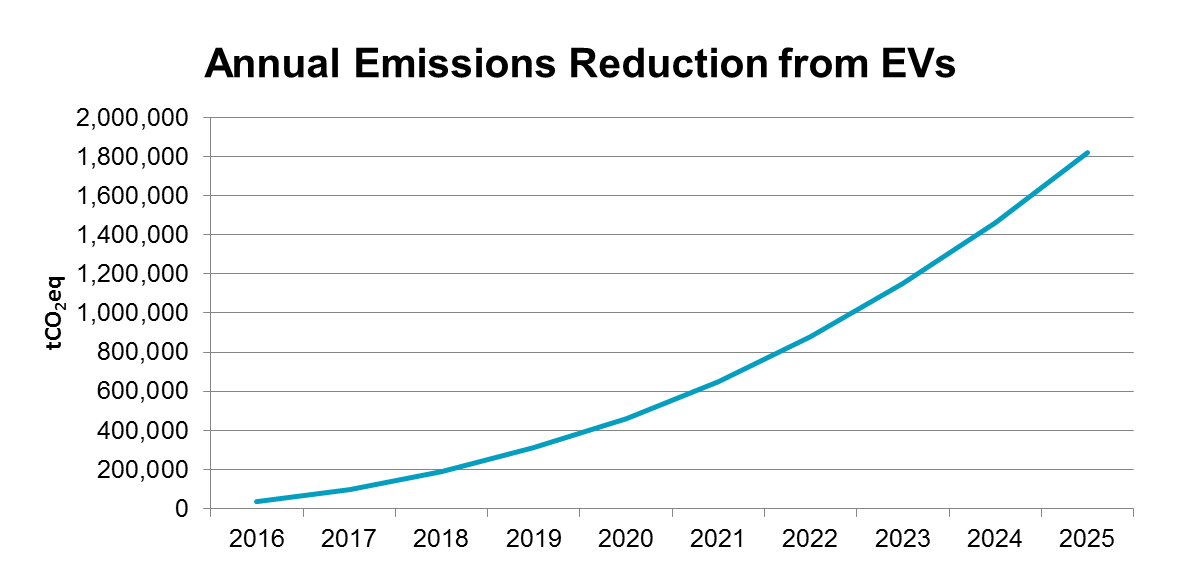In the first installment of our GHG quantification series, ABCs of Counting GHGs, we looked at different scenarios of mandating net zero buildings. Now we’ll take a look at how electric vehicles (EVs) can help us achieve Ontario’s ambitious emissions reductions targets, recently legislated under the Climate Change Mitigation and Low-Carbon Economy Act.
In 2014, light-duty gasoline vehicles contributed 13.7 MtCO2eq of emissions or 8.1% of Ontario’s 170 MtCO2eq total. Removing the fossil fuel component to vehicles can lead to significant emissions reductions as long as the electricity fueling them is relatively low carbon. Fortunately, Ontario’s electricity grid is fairly low in emissions, making EVs a fantastic opportunity for emissions reductions. Let’s see how much EVs would contribute to achieving the emissions targets.
Ontario’s Climate Change Action Plan proposes that EVs should comprise 5% of all vehicles sold by 2020 and 12% by 2025. In 2015, about 0.25% of total vehicle sales were EVs. We’ll assume the portion will rise linearly until the provinces estimated 5% in 2020 and 12% in 2025. New motor vehicle sales in Ontario were almost 800,000 in 2015. For simplicity sake we’ll say it will remain at about 800,000 for the next ten years.
PlugNDrive estimates the average battery electric vehicle reduces emissions by 3.7 tCO2eq/year compared to a compact gasoline car. While hybrid vehicles comprise a large portion of EVs currently sold and have a lower emissions reduction we will perform this quantification assuming all EVs sold achieve the 3.7 tCO2eq/year reduced.
Given these estimates, the cumulative number of EVs put on the road from 2016 to 2025 would be 491,936. At a reduction of 3.7 tCO2eq/year that would equate to 0.5 MtCO2eq/year by 2020 and 1.8 MtCO2eq reduced/year by 2025 as illustrated in the graph below.

By achieving the provincial EV adoption levels, we will be able to make up 0.5 MtCO2eq/year of the 19 MtCO2eq/year shortfall between projected and targeted 2020 emissions as stated in Ontario’s 2014 Climate Change Report. While this is a minor contribution by 2020, as EVs scale up to become a significant portion of the vehicles on the road, the associated emissions reductions can become even more significant.
